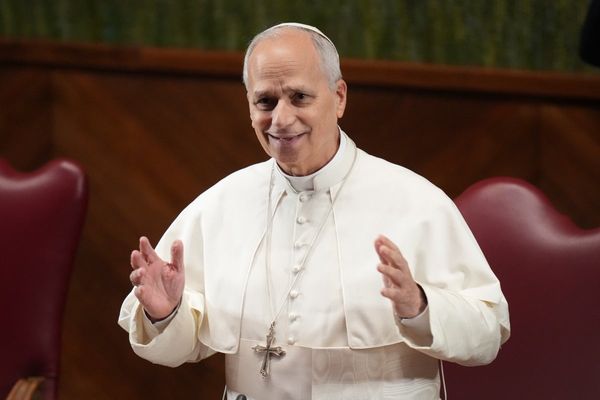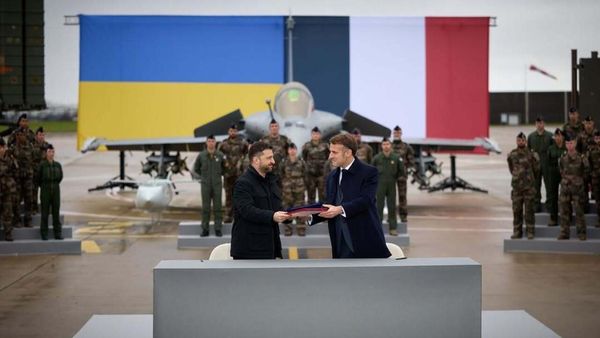
Photograph: Glasshouse Images/Alamy
On 11 November 1918, as the first world war ended, Pte Scheu of the US army found himself in a battle. Its location was the remote frozen village of Tulgas, 200 miles south of the Russian port of Arkhangelsk. Early that morning the enemy attacked. By lunchtime two men next to Scheu had been killed. The next day was worse. “Shells were just raining about. We knew we were in for a hit,” he wrote in his diary.
The soldiers bombarding Scheu’s platoon were Bolsheviks. The American crawled out and hid in a nearby building. Inside he found a wounded girl, her dead family and a decapitated priest. Canadian reinforcements scattered the attackers. Scheu heard about the armistice two months later. “It doesn’t mean a damn thing over here,” he observed bitterly. Also, he was having a good time back at base and met three “buxom lassies” at a “Russkie party”.
Scheu was part of a now forgotten expeditionary force sent to Russia in 1918. It involved guns, tanks, and uniforms, worn by 180,000 troops from 16 countries. They included soldiers from Britain, France, America and Japan, as well as Czechoslovakia, Canada, Australia and New Zealand. The intervention, as it was known, lasted two years. In almost every respect it was an abject failure, characterised by weak political leadership and delusional thinking.
A Nasty Little War by the historian and journalist Anna Reid brings this little-known period thrillingly back to life. It is a vivid and sparkling account, full of colour and dark drama. She chronicles the terrible moments of Russia’s civil war – such as the pogroms against Jews – and the sometimes ridiculous behaviour of the interventionists. It was a “quixotic and tragic military adventure”, she thinks. It combined – in the words of one officer – “intense seriousness” and “comic opera”.
The war was the only time US troops have fought in Russia. The conflict raged across a vast area, stretching from Poland to the Pacific. It happened on stony tundra and green-gold steppe. The British led an occupation force that seized the northern ports of Murmansk and Arkhangelsk, as well as Baku on the Caspian Sea. The Japanese and Americans disembarked in Vladivostok, followed by others. There were skirmishes in Siberia and in the Black Sea port of Odesa, controlled by the French.
The allies sided with a bewildering number of factions. Their initial goal was to prevent equipment from falling into the hands of the Germans, after Moscow’s new leaders – Lenin and Trotsky – signed a peace deal with Berlin. The Brest-Litovsk treaty of 1918 made huge territorial concessions. A troop ship set sail from Newcastle to the high Arctic. In one early shootout, the British fought alongside Red Guards and against the pro-German White Finns.
Germany’s defeat saw a change in allied strategy. The new military objective was to help the conservative White Russians overthrow the communist regime. Western diplomats inside Russia were convinced the Bolsheviks would not last long. The prime minister in London, Lloyd George, could have sent a mighty army to march on Moscow. Instead, he dispatched a token force of a few thousand men. Most had been rated unfit for the trenches.
The Whites, meanwhile, turned out to be deeply unsympathetic. One artilleryman, writing home, described them as “generous to absurdity at times, laughter-loving frequently, devoted comrades at odd moments, delightful hosts and good talkers”. They were also “lazy, untidy, pessimistic, boastful, ignorant, and dishonest”. Militarily they were a “flop”. Soon, they despised their western backers for not sending a bigger force to save “Holy Russia”.
All sides, including the Bolsheviks, committed atrocities. The Whites, however, were especially savage. In the second half of 1919 they carried out a string of brutal pogroms in southern Russia and Ukraine. Cossack units bayoneted Jewish villagers, and raped and mutilated women. In reports back to London, British officers downplayed these crimes. As Reid observes, many felt the same prejudices, their private journals full of “witless antisemitic jibes”.
Amid this horror, there was plenty of fun. Victor Cazelet – a 21-year-old captain – made friends with Baroness Buxhoeveden, an ex lady-in-waiting to the tsarina. After the royal family was shot in July 1918, the baroness rescued its pet spaniel. She rode with the British general staff in the one-time court train, now decorated with union flags, joining them in evening wear for dinner. “You will love the baroness. She is quite one of us,” Cazelet wrote to his mother.
Brighter personalities realised the intervention was probably doomed. They included Edmund Ironside, who commanded allied forces in the north. He arrived in Arkhangelsk to discover the British had fallen out with the Americans over supplies of whisky. The embryo White Army didn’t want to fight. There was a mutiny. “I cannot see that we are likely to do much good here,” Ironside admitted, writing: “Russia is so enormous it gives one a feeling of smothering.”
By early autumn 1919, the Whites controlled much of Siberia and the south. Months later, its armies began to retreat. The Red Army beat them back outside Petrograd and occupied Omsk. Winston Churchill, minister for war, and an ardent anti-Bolshevik, argued for more aid. But Lloyd George concluded Bolshevism “could not be suppressed by the sword”. Kyiv fell, then Crimea. The White commander, Anton Denikin, steamed away from home land on the Emperor of India, a British warship.
Left behind in this chaos were millions of civilians. There were heartbreaking scenes as they tried to escape Bolshevik retribution. In British-occupied Novorossiysk people packed the waterfront, hoping to find a place on a boat: a school and its pupils; entire Cossack villages; and a hospital with its patients. A paddle-steamer pulled out, only to capsize, hurling hundreds into the sea. “It was bloody awful,” one witness recalled.
What lessons might we learn from the intervention, more than a century later? Reid stresses the difference between 1918 and 1920 and the post-2022 western coalition that is now supporting Ukraine. In an essay justifying his invasion, Vladimir Putin blamed the Bolsheviks for creating the Ukrainian soviet socialist republic. Its borders make up today’s Ukrainian state. Russia, Belarus and Ukraine are an indivisible entity, he argues.
As Reid notes, Putin is the real inheritor of the White Russian legacy. He shares the same vaulting imperial mindset and addiction to violence. Like the Whites, he is contemptuous of Ukrainians and other non-Russian peoples. In 2005 Putin arranged for Denikin’s remains to be taken from the US and reburied in a Moscow monastery. Reid is cautiously optimistic Ukraine will prevail. “This time, the cause is both good and viable. Resolve seems set to stay strong,” she writes. Let’s hope she is right.
Luke Harding’s Invasion: Russia’s Bloody War and Ukraine’s Fight for Survival, shortlisted for the Orwell Prize, is published by Guardian Faber
• A Nasty Little War: The West’s Fight to Reverse the Russian Revolution by Anna Reid is published by John Murray (£25). To support the Guardian and Observer order your copy at guardianbookshop.com. Delivery charges may apply







